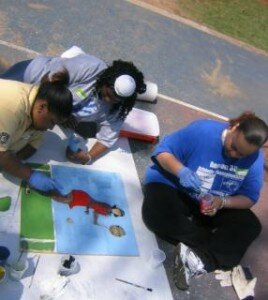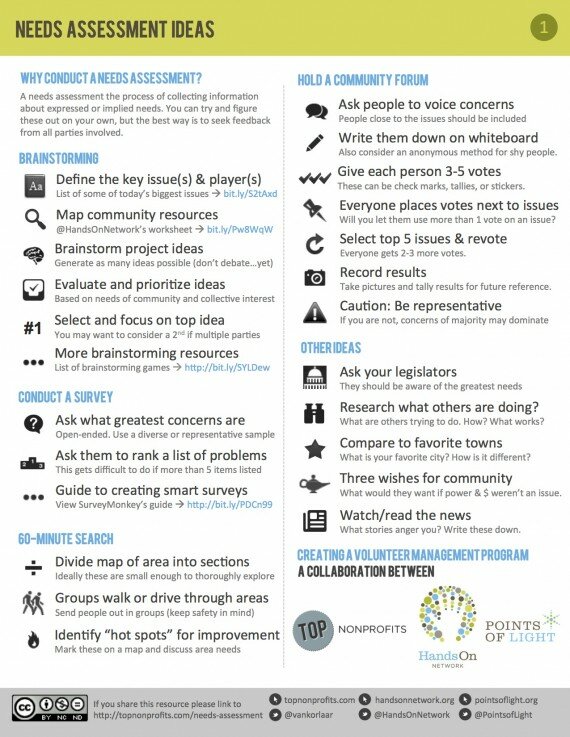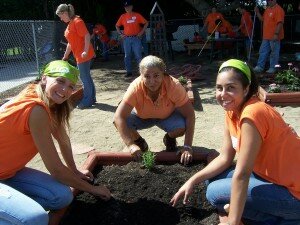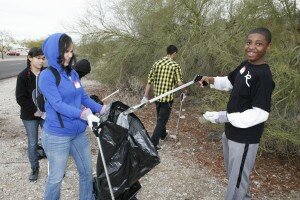 Effectively evaluating your volunteer program is important to ensuring the completion of your organization’s service goals. Evaluations can be done as often as necessary, but they should be a part of your volunteer program.
Effectively evaluating your volunteer program is important to ensuring the completion of your organization’s service goals. Evaluations can be done as often as necessary, but they should be a part of your volunteer program.
An evaluation provides data to make critical decisions about a program to better a volunteer program or experience. This data can also be used to tell the organization’s story and how it engages its volunteers. Evaluations can analyze goals, outcomes, or the actual program.
How can your organization conduct an informative evaluation? Check out our 10 steps, below to properly perform a volunteer program evaluation.
1. Recruit an evaluation team: In order to recruit an evaluation team, determine how many people you will need to complete this process. You should also decide what skills these people will need and how much time should be devoted to the evaluation process.
2. Identify your purpose: Your evaluation team and other employees should understand why you an evaluation is being conducted in the first place. This decision should have goals to be reached through this process. Decide what your organization will do with this data, once it is collected.
3. Connect the program evaluation with the organization’s goals: It should be determined through the  evaluation, whether or not the program is supporting the organization’s goals.
evaluation, whether or not the program is supporting the organization’s goals.
4. Identify and utilize resources: How can your organization support the evaluation process? Determine what this process will require and how your organization can meet those requirements. How will your organization use this data in the future?
5. Identify interest points: The evaluation will have a target audience, whom you are conducting this evaluation for. How will this information be useful to them?
6. Identify the audience: Who will be using this data? The results should be written in a style that is understandable for the target audience to utilize in the future.
7. Design the evaluation:
a. What type of evaluation will you use to achieve the desired outcome? Will it be goal-based, process-based, or outcome-based?
b. Identify the necessary information
c. The evaluation methods to be used.
d. The instrument that will be used to conduct the data collection.
e. Test the evaluation to determine it effectiveness.
8. Conduct the evaluation: Collect the necessary data to ensure effective results. The means with which you conduct your evaluation are based upon the data you wish to obtain. Whether you use surveys, questionnaires or interviews, it will be based upon the necessary results.
9. Analyze results and interpret data: Depending on the type of data, analyze it to determine the necessary next  steps for your program.
steps for your program.
10. Communicate results: Share your results with your target audience to determine the next steps for your program.
After your results are collected, your organization can determine a variety of conclusions including program success and volunteer retention rates.
How does your organization conduct evaluations? We would love to hear your tips and suggestions in the comments section below!


 Effectively evaluating your volunteer program is important to ensuring the completion of your organization’s service goals. Evaluations can be done as often as necessary, but they should be a part of your volunteer program.
Effectively evaluating your volunteer program is important to ensuring the completion of your organization’s service goals. Evaluations can be done as often as necessary, but they should be a part of your volunteer program. evaluation, whether or not the program is supporting the organization’s goals.
evaluation, whether or not the program is supporting the organization’s goals.
 Recruiting volunteers is the first step to a successful volunteer program within your organization. Training your volunteers to be an effective part of your organization is equally important.
Recruiting volunteers is the first step to a successful volunteer program within your organization. Training your volunteers to be an effective part of your organization is equally important. and weaknesses.
and weaknesses.

 April is a day to get involved in raising awareness. Why? Today is
April is a day to get involved in raising awareness. Why? Today is  making a difference are
making a difference are  When others ask you about it you can tell them to help show support for the cause.
When others ask you about it you can tell them to help show support for the cause.

 In case you have just awoken from winter hibernation, spring has finally arrived! From the high levels of pollen to the newborn animals running around spring is in full swing and will not be ignored. Since we cannot hide from it, it is time to celebrate the new spring season with volunteer work (we would not be
In case you have just awoken from winter hibernation, spring has finally arrived! From the high levels of pollen to the newborn animals running around spring is in full swing and will not be ignored. Since we cannot hide from it, it is time to celebrate the new spring season with volunteer work (we would not be 

 Keeping your community beautiful is a great way to better your economy, environment and well-being. This month get out and take pride in your community’s appearance. Let’s clean up our neighborhoods and make every month Keep America Beautiful Month!
Keeping your community beautiful is a great way to better your economy, environment and well-being. This month get out and take pride in your community’s appearance. Let’s clean up our neighborhoods and make every month Keep America Beautiful Month! Specialist for HandsOn University.
Specialist for HandsOn University.
 Fortunately, there is now a big push to help communities across the country tap the incredible skills so many volunteers have to offer. In 2008 the
Fortunately, there is now a big push to help communities across the country tap the incredible skills so many volunteers have to offer. In 2008 the  Be flexible and show respect. It would be great if people with needed skills were willing to devote themselves to one charity, or solely to volunteerism, but they probably need to spend the majority of their time working on paid projects or looking for work. Give the volunteers specific tasks and short-term projects that require only a few hours per day or a few months of their time and make sure their important contribution is recognized. The obvious way to do this would be individual praise, but write-ups on the charity’s Web site or Facebook page or in an electronic newsletter to supporters can show appreciation. Let volunteers see how their work helps move the organization forward. Those “rewards” aid in continued motivation and retention.
Be flexible and show respect. It would be great if people with needed skills were willing to devote themselves to one charity, or solely to volunteerism, but they probably need to spend the majority of their time working on paid projects or looking for work. Give the volunteers specific tasks and short-term projects that require only a few hours per day or a few months of their time and make sure their important contribution is recognized. The obvious way to do this would be individual praise, but write-ups on the charity’s Web site or Facebook page or in an electronic newsletter to supporters can show appreciation. Let volunteers see how their work helps move the organization forward. Those “rewards” aid in continued motivation and retention.
 s. This idea incorporates the concept of Neighboring, or the idea that communities – especially those in underserved and under resourced areas – should be engaged in their own change, not have solutions scripted for them by outsiders. As we engage our children and students this holiday season, it’s important to think deeply about this model. When you are out purchasing food, clothing, toys, or other goods to donate to holiday collections, or participating in service with organizations to create change, what can you do to extend the connection with the populations on the receiving end?
s. This idea incorporates the concept of Neighboring, or the idea that communities – especially those in underserved and under resourced areas – should be engaged in their own change, not have solutions scripted for them by outsiders. As we engage our children and students this holiday season, it’s important to think deeply about this model. When you are out purchasing food, clothing, toys, or other goods to donate to holiday collections, or participating in service with organizations to create change, what can you do to extend the connection with the populations on the receiving end?

 So you want to start a classroom volunteer project? How on Earth do you begin a service project especially with young kids and very little time to stray away from lesson plans? Here are some project ideas for all types of ages and schedules:
So you want to start a classroom volunteer project? How on Earth do you begin a service project especially with young kids and very little time to stray away from lesson plans? Here are some project ideas for all types of ages and schedules: small children really do learn the power of giving back by participating in service projects.
small children really do learn the power of giving back by participating in service projects.
